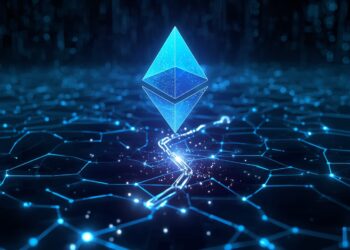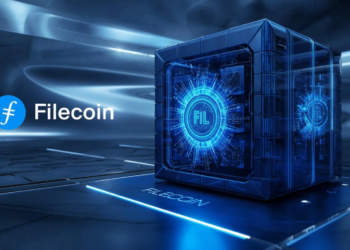Introduction
Cryptocurrencies like Bitcoin and Ethereum are more than just digital money; they are reshaping how we think about value and trust. Blockchain technology makes it possible to transfer money without middlemen, putting control back in the hands of users. But how do these networks stay secure and work smoothly? That’s where cryptoeconomics comes in. It’s the secret sauce that keeps decentralized systems running. This article aims to break down cryptoeconomics for newcomers and explain why it plays a big role in modern blockchain systems.
What is Cryptoeconomics?
Definition and core concepts
Cryptoeconomics blends cryptography, economics, and computer science. It’s the study of how to design digital systems that reward honest behavior. Think of it as setting the rules of a game so players are motivated to play fair. The goal is to build systems where everyone follows the rules because it benefits them directly. Incentives are baked into the network’s code, guiding users to behave properly.
Historical context and evolution
Cryptoeconomics started with simple digital currencies like Bitcoin. Over time, the ideas grew more complex, leading to platforms like Ethereum that do much more than just store value. Researchers began exploring how these networks could self-regulate and secure themselves without a central authority. Key milestones include Bitcoin’s launch in 2009 and Ethereum’s smart contracts in 2015, which expanded cryptoeconomic models into new areas like DeFi and NFTs.
Fundamental Principles of Cryptoeconomics
Incentive mechanisms
Incentives drive people and machines to act in the network’s best interest. Miners get rewards for verifying transactions, encouraging them to keep the network safe. Stakers earn rewards by locking up tokens and helping validate new transactions. These rewards motivate honest participation, which is key for network health and growth.
Game theory applications
Game theory helps predict what participants will do. It’s like a chess game where each move influences the next. Bitcoin mining is a good example—it’s a race where every miner wants the reward but risks losing money if they cheat. The balance of incentives creates a stable system where cheating is too costly.
Security through economic incentives
Economic incentives prevent attacks on the network. For instance, Bitcoin’s reward system makes double-spending (spending the same coin twice) unprofitable. Attackers would need enormous computing power and resources, making malicious acts too expensive. This deterrent helps keep the network honest.
Key Components of Cryptoeconomic Systems
Tokenomics
Tokenomics is about designing digital tokens the right way. A token must encourage activity that helps the network grow. For example, Ethereum shifted to a proof-of-stake model where holding tokens helps secure the network. This move changed how tokens work, making staking a rewarding activity that also improves security.
Consensus mechanisms
Consensus models agree on the state of the blockchain. Proof-of-work (PoW) requires lots of computer power, but it’s secure. Proof-of-stake (PoS) uses tokens as collateral. Other models include delegated proof-of-stake (DPoS) and Byzantine Fault Tolerance (BFT). These systems keep everyone on the same page and trust the data without a central authority.
Governance models
Governance decides how rules are changed. On-chain governance involves voting directly on blockchain, while off-chain relies on groups or communities. How decisions get made impacts how decentralized the network really is. It also influences how fast and flexible a project can adapt to changes or fix problems.
Economic security measures
Security isn’t just technical; it’s also economic. Nodes can be penalized through slashing, where part of their stake is taken away if they cheat. Collateral acts as a safety deposit, discouraging misconduct. These tools make bad behavior too costly, helping to protect the network from fraud and attacks.
Practical Applications and Impact
Decentralized Finance (DeFi)
Cryptoeconomics fuels DeFi by allowing trustless financial services. You can borrow, lend, or trade without banks. Projects like Uniswap enable fast, permissionless swaps between tokens, while MakerDAO creates stablecoins that stay pegged to real-world currencies. These systems grow because users trust the economic incentives built in.
Non-Fungible Tokens (NFTs)
NFTs create new markets for digital art, music, and collectibles. The value of NFTs is driven by scarcity and ownership rights secured through cryptoeconomics. As demand rises, more artists and creators see economic potential in blockchain-based assets. Market data shows NFT sales reaching billions, emphasizing their transformative role.
Blockchain scalability and sustainability
Cryptoeconomics also tackles issues like network congestion and high energy use. Layer 2 solutions, like rollups, reduce load and make transactions cheaper. Eco-friendly consensus algorithms, such as proof-of-stake, cut energy consumption drastically. These innovations keep networks efficient and greener in the long run.
Challenges and Future Directions
Limitations and risks
Cryptoeconomics isn’t perfect. Inflation can reduce the value of tokens, and centralization can happen if a few players control most rewards. Regulations are uncertain, creating legal risks. Plus, bad actors may find new ways to manipulate systems, threatening security and trust.
Innovations on the horizon
The future holds improvements in game theory and token design. Experts are exploring how quantum computing might challenge cryptoeconomic security. AI could help optimize incentives and governance. These advances may lead to even more robust and dynamic blockchain networks.
Tips for beginners
If you want to understand new blockchain projects, look at how they design their tokens and incentives. Check if their consensus mechanisms are secure and how they govern. Reading whitepapers, joining online communities, or taking beginner courses can boost your knowledge and confidence.
Conclusion
Cryptoeconomics is at the heart of blockchain’s power. It ensures participants stay honest through the right mix of incentives, security tools, and governance. Knowing how these systems work helps you participate smarter—whether as an investor, developer, or user. As blockchain technology advances, cryptoeconomics will shape the future of digital economies, making trustless systems more reliable and widespread. Stay curious and keep learning—this is just the start of a new era of digital value.
Join Us : Twitter | Website | GitHub | Telegram | Facebook | YouTube

























